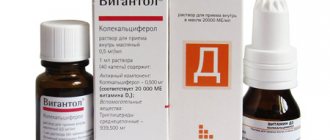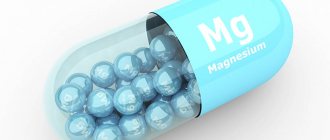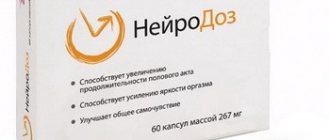Pharmacological properties of the drug Ethyl ether
Purified ethyl ether (ether for anesthesia) belongs to the group of drugs for inhalation anesthesia. Causes depression of the central nervous system while maintaining the function of the respiratory and vasomotor centers, relaxation of skeletal muscles. Anesthesia when using ether is easily manageable. Does not increase the sensitivity of the myocardium to adrenergic stimulation. Ether vapors cause irritation of the mucous membranes of the respiratory tract, hypersalivation and bronchial hypersecretion. Sleeping with ether is painful for patients and takes a long time (12–20 minutes), awakening occurs 20–40 minutes after stopping the supply of ether, and completely anesthesia depression disappears after a few hours. In addition to ether for anesthesia (including stabilized), medical ether is also produced, which is less purified and unsuitable for anesthesia.
Characteristics of the substance
Diethyl ether is an organic compound that is most often used as a chemical reagent. The substance also has the following synonymous names:
- ethyloxide
- ethyl/sulfuric ether
- ethoxyethane
- "sweet oil of vitriol"
Ether synthesis is possible both in a chemical laboratory and on an industrial scale. However, working with this substance is extremely dangerous, as it has the following properties:
- looks like a clear liquid
- burning taste
- is highly flammable when reacting with oxygen, so ether vapor is extremely dangerous in anesthesiology
- if safety precautions are not followed (exposure to heat, moisture, light) decomposes into toxic compounds
- Possible spontaneous combustion if stored improperly
Thus, ethoxyethane is used in the form of a liquid or explosive vapor. The substance has the properties of an effective chemical solvent, which makes it an important reagent in industry. Even Isaac Newton (1704) studied the ether at one time, although the first information about discovery attempts dates back to the 9th century.
Side effects of the drug Ethyl ether
Irritation of the respiratory tract may be accompanied at the beginning of anesthesia by reflex changes in breathing, up to laryngospasm and apnea. A sharp increase in blood pressure and tachycardia may be observed (due to an increase in the content of norepinephrine and epinephrine in the blood), especially during periods of excitement. In the postoperative period, vomiting and respiratory depression are often observed. Due to the irritating effect on the mucous membranes of the respiratory tract, bronchitis and pneumonia may develop in the postoperative period.
Pharmacology
The ether easily penetrates the blood-brain barrier, quickly reaching the deep structures of the brain when administered by inhalation. In this case, the substance affects tissues unevenly, affecting mainly neurons. The product is also used for pain relief in dentistry and “distraction” therapy (local irritation by rubbing).
Mechanism of action
According to its pharmacological properties, ester is a CNS depressant, that is, it inhibits its functions. The main targets are the membranes of the processes of nerve cells that transmit electrical impulses. The substance reversibly disrupts the ultrastructure and interaction of neurons in the deep parts of the brain.
Inhibition of interneuronal transmission can lead to a compensatory increase in the activity of other areas. The patient temporarily loses consciousness, all types of sensitivity and reflexes. Mutually enhances the effect of various CNS depressants; the most dangerous are combinations with analeptics, psychostimulants, alcohol, and drugs.
Special instructions for the use of the drug Ethyl ether
To reduce reflex reactions and reduce bronchial secretion and salivation, patients are premedicated with atropine or other anticholinergic drugs before ether anesthesia. In order to reduce agitation, ether anesthesia is usually used after induction of anesthesia with barbiturates. Sometimes anesthesia is started by administering nitrous oxide, and ether is used to maintain anesthesia. The use of muscle relaxants can enhance the relaxation of skeletal muscles and significantly reduce the amount of ether required for anesthesia. When using an ether-oxygen mixture, especially in devices with a closed system, it is necessary to observe safety measures to prevent the possibility of explosion. Ether should not be used during operations using electrocoagulation.
How is it used in medicine?
Initially, diethyl ether was used for anesthesia, since its effect on brain neurons and the unique property of “immobilizing” the central nervous system is completely reversible (subject to the use of small dosages).
Subsequently, the substance was used only for inhalation anesthesia during surgical interventions. Diethyl ether has never been used in its pure form because it has many side effects.
Ether is widely used in medicine because it provides:
- increased bleeding of capillaries,
- inhibition of intestinal motility,
- suppression of the secretory function of the gastrointestinal tract.
In a less purified version, the substance is used for rubbing and preparing tinctures and extracts. Sometimes diethyl alcohol is prescribed as a reflex-stimulant orally for vomiting and hiccups.
Do you have questions for a narcologist? Sign up for a free consultation
Ether use by drug addicts
Drug addicts (substance abusers) inhale ether in relatively small volumes to obtain a feeling of euphoria and excitement. After inhaling the substance, a person becomes overly active and talkative.
It is almost impossible to obtain medical (diethyl, for anesthesia) ether for drug addicts whose activities are not directly related to working with this substance. Therefore, the drug has to be obtained through people working in the medical field and having access to anesthesia and anesthesia (anesthesiologists). Less commonly, drug addicts obtain the substance through laboratory assistants who use or receive the substance during various chemical reactions, or through employees of chemical industry enterprises.
Drug addiction?
Get a consultation now
Preparation of diethyl ether
Ethers do not occur in nature; they are obtained synthetically. Under the influence of acid catalysts on ethyl alcohol at elevated temperatures, diethyl ether is obtained (the formula is indicated above). The easiest way to obtain this substance is by distilling a mixture consisting of sulfuric acid and alcohol. To do this, it must be heated to 140-150 degrees Celsius. We will need ethyl alcohol and sulfuric acid (in equal proportions), pipettes, test tubes and gas outlet tubes.
So, after the equipment and reagents are prepared, you can begin the experiment. Pour 2-3 ml of a mixture of alcohol and acid into a test tube (it must be dry) and heat it slowly. As soon as boiling begins, the burner is removed, and 5 to 10 drops of ethyl alcohol are added to the hot mixture using a pipette along the wall of the test tube. The reaction that occurs looks like this:
- CH3—CH2—OH (ethylsulfuric acid) + H2S04 CH3—CH2—OSO3H + H2O;
- CH3—CH2—OSO3H + CH3—CH3—O;
- CH3—CH2—O—CH2—CH3 (diethyl ether)+ H2SO4.
The formation of diethyl ether is indicated by the appearance of an odor.
Effects of the substance on the human body
The first cases of non-medical use of the substance (inhalation of vapors to obtain pleasant sensations) were described back in 1847.
When inhaling essential vapors, the effect is comparable to drinking alcohol. Against the background of the anesthetic effect, drug addicts experience euphoria, muscle tone, motor and speech activity increase. Drug intoxication occurs almost instantly, but the effect is short-lived - 10-15 minutes.
The drug addict has the feeling that he is “in a fog,” in oblivion. At such moments, all problems and responsibilities are “forgotten,” and the level of social responsibility decreases. A person is not interested in anything except the pleasant sensations themselves.
Less commonly, ethereal vapors can cause hallucinations - auditory and visual. During a trip, the addict does not control his actions, so the drug ether is not used alone. This explains that drug addicts try to take volatile drugs in groups of several people.
Although the intoxicating properties of ethereal vapors are weakly expressed, this does not mean that the drug is harmless. Yes, when inhaled, there is no physical dependence accompanied by a strong withdrawal syndrome, but people who take the substance for a long time develop a persistent mental dependence.
Even mental dependence on the drug ether does not occur in everyone after one-time use of the substance. Mild euphoria, which is complicated by symptoms of poisoning - for example, headache, vomiting, often scares away novice drug addicts. If inhaling vapors causes pleasant sensations, then there is a high probability of further development of mental dependence. Some researchers note that ethereal vapors, like other volatile drugs, can lead to addiction after only 4-5 single inhalations, provided that the drug addict receives pleasant sensations.
Subsequently, a person requires a larger dose, tolerance to the substance increases - the body’s protective reactions to poisoning practically disappear, and the phase of somatic sensations is also shortened - euphoria and drug intoxication occur faster. Drug addicts experience hallucinations more often, but as the period of addiction increases, each hallucinatory experience becomes more controllable - after the end of drug intoxication, the drug addict remembers and can tell what happened to him.
It should be noted that, as in the case of other volatile toxic substances, with prolonged inhalation (3-6 months or more), withdrawal syndrome may develop, i.e. addiction develops into drug addiction with personality changes, abstinence, increasing doses, accelerating the stage of drug intoxication.
Health implications
Regular use of ether leads to the following complications:
- Detachment from reality, deep depression.
- Auditory and visual hallucinations.
- Chemical smell from clothes.
- Slow or rapid speech, stuttering.
- Mood swings, excessive emotionality.
In this case, memory, attention, and intellectual activity are impaired. Over time, coordination deteriorates, leading to an unsteady gait.
Treatment for ether addiction
You can only get rid of drug addiction with the help of professionals. It is important to pay attention to socio-psychological rehabilitation and deeply work through the problem with a psychotherapist.
If you find out that a person close to you uses ether or find a strange cap with a clear liquid and a pungent odor in his room, call the Zdravnitsa professional treatment and rehabilitation center at 8 ( 800) 200-27-23 . We work around the clock and anonymously.
Why is it used?
Ether has become widespread among drug addicts. Considering it a soft drug, they inhale toxic fumes several times a day, instantly getting the desired narcotic effect and absolutely not thinking about the consequences.
Diethyl ether is popular among substance abusers for the following reasons:
- Easy to obtain - highly purified diethyl ether can be purchased at any pharmacy or ordered from an online store without volume restrictions.
- Availability - this drug is widespread among young people: on average, the price of 1 liter of ether is 3,000 rubles.
- Instant narcotic effect - the effect of consuming diethyl ether occurs instantly after inhaling the vapor.
Many drug addicts, when inhaling ether, do not know about the nuances of its use. Prolonged and uncontrolled drug use has an extremely dangerous effect on an unprepared body.
What it is?
Ether (diethyl, medical, stabilized for anesthesia) is a volatile, colorless liquid with a specific odor, reminiscent of duchess. Evaporation of 1 ml of liquid produces up to 230 ml of vapor suitable for medical purposes. The substance is highly flammable, and at a certain concentration in combination with oxygen and other gases it is explosive. In gaseous form, ether is heavier than air.
Under external influence (light, heat, humidity, mixing with air) it decomposes, resulting in the formation of dangerous toxic substances that cause irritation of the respiratory tract.
It is documented that the substance was first obtained by the German botanist and pharmacist Valery Cordus when he distilled a mixture of ethyl alcohol and sulfuric acid in 1540. The scientist drew attention to the pronounced anesthetic properties of ether.
Overdose
Uncontrollable craving for diethyl ether persists for several years and usually ends with a complete transition to harder drugs. Gradually, the usual dosage becomes insufficient and the addict is forced to increase the volume of inhaled vapor in order to achieve euphoria. All this usually leads to an overdose.
Signs of diethyl ether intoxication:
- severe cramps,
- drop in blood pressure,
- suffocation,
- excited state
- feeling of fear,
- panic.
Note! In case of an overdose of ethers, dysfunction of the respiratory and cardiovascular systems with possible death cannot be ruled out.
The only way to help a drug addict overdose on an essential drug is to seek professional medical help. Do not try to induce vomiting in a drug addict, do not give him any medications, wait for the doctor to arrive.









